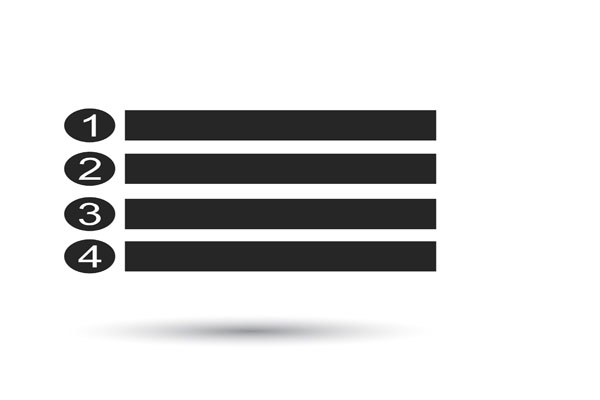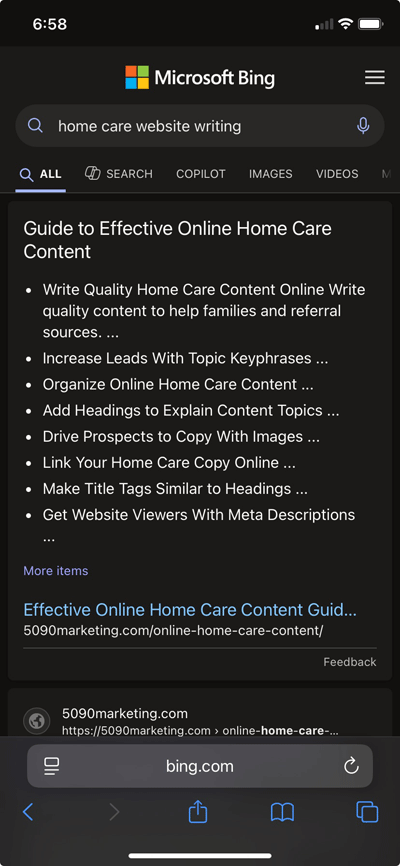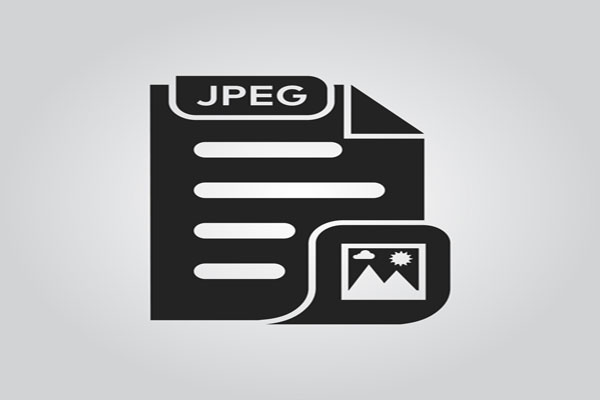Structure home care articles so families and search engines know what your blog article is about.
Focus on blog SEO (search engine optimization).
Organize your blog articles for older adults, family caregivers, Google and Bing so they understand your topics. Then your articles have the best chance of showing in search engines for the subjects you want them to. This is organic search.
Hubspot’s report (PDF page 10) shows that organic search is the top way (27%) to get leads to your website.
Read on to learn the 8 steps to writing blog articles that gain the attention of families and search engines.
In This Article:
Step 1: Create a Main Heading

The most important part of your blog SEO is your main heading. It determines where in the search engines your article will appear.
Make sure your article title is clear about what your article is about and who will benefit. Then search engines can bring the right leads to your blog. Because your article will show in search results for the topic families are searching for.
Craft a heading that your leads will want to click. Then Google and Microsoft Bing will see that older adults and their caregivers want to read that blog article.
Step 2: Introduce Home Care Article

Begin your blog article with an introduction.
The goal of this section is to get older adults and their caregivers to read your blog article.
Show leads and search engines the main topic of your article. Then Google and Microsoft Bing can place the article in search results for that subject.
Explain the benefit families will get from reading the article. Back up your claim with a statistic if available.
End the section with a sentence stating what solution your article will give them.
Step 3: Add a Table of Contents

Add a table of contents (TOC) to your home care article structure. Then families can view blog sections and click on section they wish to read.
Place after your introduction and before your first subheading.
Common blog practice is to include a table of contents in all articles around 1000 words or more.
Out of a dozen home care companies I researched, only one included a table of contents in their article. These agencies are missing the opportunity to be more visible in search engines, especially Microsoft Bing.
Some older adults use Bing because it is loaded on their Microsoft computer. And some adult children use on their office desktop computer.
In fact, over 24% of searches made in the United States are made on Microsoft Bing search engine. Because Bing also powers Yahoo!, part of DuckDuckGo and AOL searches.

Under the search “home care website writing” my “Effective Online Home Care Content Guide” is featured first in Bing.
This snippet is hard to get. Usually only webpages that are on the first page of search results achieve. The snippet lists my table of contents and displays link to my webpage.
Snippets are not permanent and are based on the changing algorithms of search engines. But whenever you can get one, it will help bring families to your website.
Step 4: Include Subheadings

Arrange senior care articles so they are easy to navigate.
Older adults and their family caregivers will scan your article subheadings. Then they will read the sections that interest them.
Be consistent with the type of words and length you use in your article subheadings.
Start all the subheadings in an article with the same type of words. Then your leads can view and comprehend them with ease.
For example, in this article I start subheadings with verbs.
Make sure all the subheadings tie back to the overall topic of your blog article. Then search engines can see you have covered the topic completely with your subtopics. This shows Google and Bing that you wrote quality content, which helps webpage be easier to find in search engines.
Step 5: Construct Senior Care Content

Write blog content that’s easy to understand. Then the articles can be more visible to leads in search engine results pages.
Because search engines like to see you are focusing on content that families find simple to read. And the more they browse your article, the more time they will spend on your website.
My research of home care blog articles shows that the sentences are not concise enough for older adults and their caregivers.
I found articles with 30 to 40 words in a sentence. In contrast, I write sentences with 20 words maximum for ease of reading.
Step 6: Use Images Throughout

Use images to pull leads to your articles.
Search engines, such as Google and Bing, like articles to have images in them. They help families who view your articles.
Make images part of your home care article structure. Because older adults and their caregivers may avoid reading large blocks of text with no photos.
Define your blog content with images. People understand images quicker and retain the photo in memory longer than written copy.
The most images any of the agencies I researched had in their article was five. So stand out from your competitors with more images.
Step 7: Recap With a Conclusion

Your conclusion should be a summary of your key takeaways from your blog article.
Of the home care companies I researched, 25% did not have a subheading for their conclusion section. This is a missed opportunity for blog SEO. Because your conclusion subheading cues search engines that the section is the summary and end of your article.
One company devotes the entire section (subheading and 2 paragraphs) to how their company can help. This is not ideal because some leads want to read a summary of your article instead.
And Google also wants to see a summary of your blog article not a sales section for your agency.
Finish the section with a sentence that sums up the benefit to families.
Step 8: End With a Call-to-Action

Make sure to have a call-to-action (CTA) link in your conclusion or below the last sentence.
What action do you want your leads to take?
In my research of home care blog articles, I found links in conclusion sentence or buttons below section.
More specifically, links to other articles for further reading were used 46% of the time. And one to two sentences with links to locations, contact us and services were used 54% of the time.
Move families toward making the decision to hire your company with call-to-action links.
Conclusion: Organize Home Care Articles
Get more visibility in search results pages through blog SEO.
Craft a title that clearly states the topic of the article.
Show the benefit leads will learn in your introduction.
Give families a quick way to navigate through the article with your table of contents.
Specify your subtopics with subheadings.
Write your article with brief sentences for reading ease.
Include enough images to break up copy and aid in understanding and recall.
Provide a summary of your article in your conclusion section.
Make sure to have a call-to-action that keeps leads on your website.
Remember this: your article structure will move families through your blog and the rest of your website.
Keep reading: Complete Guide to Home Care Blog Marketing


